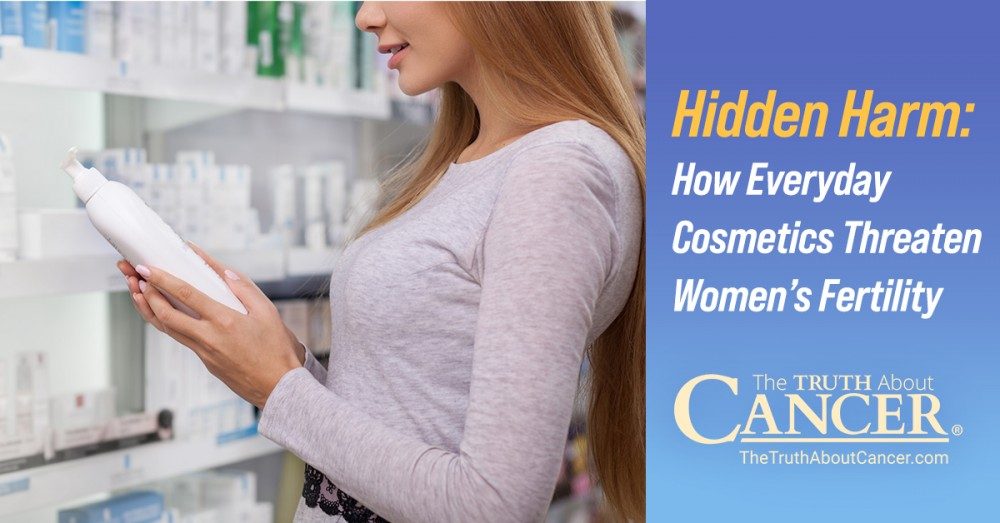In our modern world, cosmetics have become an integral part of personal care routines, promising myriad benefits from softer skin and longer lashes to tamed curls and colorful lips. However, these enticing claims often mask a sinister reality: the inclusion of hazardous chemicals that can pose severe health risks, particularly to reproductive health.
A significant concern is the presence of endocrine-disrupting chemicals (EDCs) in cosmetics. EDCs can interfere with fertility and reproduction, fetal growth, and infant development. Alarmingly, these products are heavily marketed to young women, who often use cosmetics at higher rates than other demographics and are often unaware of the potential health risks.
The U.S. Food and Drug Administration (FDA) categorizes many personal care items such as deodorants, perfumes, lotions, nail polish, shampoos, and makeup as “cosmetics.” However, unless these products are marketed to treat a condition, like dandruff or perspiration, their regulation does not parallel that of drugs. As such, cosmetic companies hold the power in communicating product safety to consumers.
Cosmetic companies frequently add chemicals to their products for specific purposes. UV filters like oxybenzone protect the skin from sun damage, phthalates enhance fragrance, parabens and triclosan provide antimicrobial properties, and per- and polyfluoroalkyl substances (PFAS) enhance durability. However, not all chemicals are present in every product, making the task of avoiding exposure complex and confusing.
Various chemicals can co-occur in products, posing a risk of exposure to multiple chemicals simultaneously. Endocrine-disrupting chemicals, in particular, do not always feature on ingredient lists, leaving consumers unwittingly exposed. These chemicals can permeate the body through the skin, respiratory tract, or oral route, targeting endocrine, nervous, and cardiovascular systems.
Endocrine disruptors, including phthalates, parabens, triclosan, and PFAS, can mimic hormones or block hormone receptors, leading to abnormal hormone production, secretion, or transport. These hormonal changes can have profound effects on reproductive health, leading to poor sperm quality, miscarriages, and endometriosis, along with thyroid disruption and abnormal growth and development.
Moreover, exposure to these chemicals can link to neurological conditions such as attention-deficit/hyperactivity disorder, cognitive impairment, and depression. Cardiovascular issues such as high blood pressure, insulin resistance, and coronary heart disease have also been associated with chemicals in cosmetic products.
The level of risk is difficult to measure and depends on the exposure amount, the type of chemical, and its interaction with the endocrine system. For example, increased exposure to a common phthalate was associated with doubled odds of developing endometriosis, a painful condition that can interfere with pregnancy.
Furthermore, exposure to multiple types of EDCs has been associated with a 25% increase in the odds of low birth weight. Notably, one study found that college-age females use an average of eight different personal care products each day that can contain EDCs, with some using as many as 17. This high product usage correlates with higher exposure to EDCs. Yet, 80% of these women were unaware if their products contained harmful chemicals.
Fortunately, exposure to these chemicals can be reduced. When adolescent girls stopped using products with EDCs, the concentrations in their urine dropped by up to 45%. However, the alternative products without EDCs are often more expensive, potentially out of reach for many young people.
Regulation of these harmful chemicals is advancing, albeit slowly. Washington State has passed legislation banning PFAS, lead, phthalates, formaldehyde, and other harmful chemicals from 2025, incentivizing companies to produce safer products. Other states like New York, California, Minnesota, and Maine have implemented restrictions on chemical additives in cosmetics.
Despite these advances, many believe that a national ban on the use of harmful chemicals in cosmetic products would be the most equitable means of reducing everyone’s exposure. In an era of increasing health consciousness, it is crucial that we scrutinize the promises made by cosmetic companies. The potential risks lurking beneath the attractive packaging are real, with far-reaching implications for our reproductive health. It is time for regulatory bodies, companies, and consumers alike to prioritize health over aesthetic promises.
As a woman (and the mother of 3 beautiful daughters), this issue is near and dear to my heart. That’s why I set out on a mission to create a luxury, toxic free skincare line for women who care about their health and beauty. These products were carefully developed to ensure that there are ZERO harmful or toxic chemicals to be found.
According to the ToxicFree Foundation, a “Toxic Free” product “has been created without the use of any potentially toxic, carcinogenic, or poisonous ingredients that could be questionable in safety.” ToxicFree certified products are guaranteed to be completely free from harmful chemicals, contain only ingredients that are 100% natural and from the earth, and manufactured sustainably and are safe for the environment.
Beauty is more than skin deep. We want you to love your skin, and the CHARLÍS line of luxury skin care products will help you feel confident in your healthy, beautiful, radiant skin. For information on how to order the best skin care products on the market, please visit https://charlis.beauty/.



















Leave a Reply